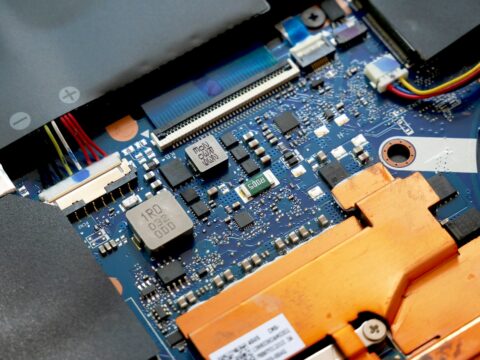Tribunal Deems Procedural Lapses Curable, Admits Insolvency Plea Against Corporate Debtor

Introduction
In a significant ruling, the National Company Law Tribunal (NCLT), Mumbai Bench-II, admitted an insolvency petition filed by Pegasus Assets Reconstruction Pvt. Ltd. against Dee Plone Polyester Pvt. Ltd.[1] under Section 7 of the Insolvency and Bankruptcy Code, 2016 (IBC). The case, centered on a default of over ₹37 crore, highlights the tribunal’s approach in distinguishing between substantive financial defaults and curable technical lapses. By holding that objections relating to stamping, registration, and procedural irregularities could not override clear evidence of debt and default, the NCLT reaffirmed the principle that insolvency proceedings must focus on the existence of debt and inability to repay, rather than being derailed by procedural technicalities.
Table of Contents
Background of the Case
The financial dispute traces back to loan facilities sanctioned by Dombivli Nagari Sahakari Bank Ltd. (DNS Bank) to Dee Plone Polyester Pvt. Ltd. between 2014 and 2017. These facilities included:
- A term loan of ₹10 crore,
- A cash credit facility of ₹5 crore, and
- A fresh term loan of ₹6.18 crore sanctioned in July 2016.
The borrowings were part of a consortium arrangement where DNS Bank acted as the lead bank. To secure these facilities, the Corporate Debtor executed multiple hypothecation and mortgage deeds covering both movable and immovable assets, including plant and machinery, stock, receivables, land, and buildings. Additionally, guarantor properties such as land parcels, industrial sheds, and residential assets were mortgaged, with an estimated security value of nearly ₹20.55 crore.
However, the Corporate Debtor defaulted in servicing its debt obligations, and DNS Bank classified the loan account as a Non-Performing Asset (NPA) on 31st March 2018. Subsequently, through a registered Assignment Deed dated 31st December 2020, DNS Bank transferred the outstanding debt along with associated security rights to Pegasus Assets Reconstruction Pvt. Ltd.
As of 16th October 2023, the total default stood at ₹37.35 crore, inclusive of principal, interest, and penal charges. Importantly, the Corporate Debtor acknowledged its liability in audited financial statements up to FY 2020 – 21, as well as in an email dated 16th February 2024, admitting financial distress and inability to repay.
Tribunal’s Findings
After analyzing the submissions, the NCLT held:
- Debt and default were established under Sections 5(8) and 3(12) of the IBC.
- Technical lapses like absence of IU record, stamping irregularities, and Section 65B objections were curable defects and could not invalidate the petition.
- The Corporate Debtor’s acknowledgments of liability in its financial statements and email communications preserved limitation and proved default.
- The petition was not filed maliciously, but rather to resolve insolvency.
Order of the Tribunal
The NCLT admitted the petition and ordered:
- Commencement of CIRP against Dee Plone Polyester Pvt. Ltd.
- Declaration of moratorium under Section 14 IBC, prohibiting suits, transfers, enforcement actions, and recovery proceedings.
- Appointment of Mr. Anuj Bajpai as Interim Resolution Professional (IRP).
- Directions for public announcement of CIRP and invitation of claims.
- Financial Creditor to deposit ₹5 lakh as initial CIRP cost.
- Management of the Corporate Debtor to vest in the IRP, with an obligation to cooperate fully.
Legal Significance
The NCLT Mumbai’s decision carries important implications for insolvency jurisprudence under the IBC:
1. Substance over Technicalities
- The tribunal reaffirmed that the primary test for admission under Section 7 IBC is the existence of financial debt and default.
- Procedural irregularities such as absence of an Information Utility record, stamping defects, or lack of a Section 65B certificate are curable defects and cannot overshadow substantive financial default.
2. Acknowledgment of Debt Extends Limitation
- The ruling highlights that balance sheet disclosures and email communications acknowledging liability qualify as acknowledgments under Section 18 of the Limitation Act, effectively extending limitation periods.
3. Authorization Defects Not Fatal
By holding that authorization lapses at the time of filing can be cured through subsequent Board Resolutions, the tribunal highlighted a liberal approach towards technical compliance, ensuring genuine claims are not dismissed on avoidable grounds.
4. Stamping and Registration Issues
In reliance on N.N. Global Mercantile v. Indo Unique Flame Ltd.[2], the tribunal clarified that inadequate stamping or registration does not render loan documents void but only inadmissible until cured. This reiterates that insolvency admission is a summary proceeding, not a full-fledged trial on document admissibility.
5. Clarification on Section 65 IBC
The tribunal dismissed allegations of malicious intent, emphasizing that genuine insolvency proceedings cannot be treated as recovery actions, even if initiated by an Asset Reconstruction Company (ARC).
6. Strengthening the Role of ARCs
By admitting Pegasus ARC’s petition, the order reinforces the role of ARCs as effective financial creditors empowered to pursue CIRP against defaulting borrowers.
This judgment reiterates some crucial principles of insolvency law:
Acknowledgment of liability in balance sheets or written communications such as emails is sufficient to extend the limitation period under Section 18 of the Limitation Act.
Procedural or technical defects whether relating to authorization, stamping, or production of a Section 65B certificate do not, by themselves, invalidate a Section 7 application.
The core inquiry under Section 7 of the IBC is confined to establishing the existence of financial debt and the fact of default, rather than allowing technical objections to frustrate insolvency proceedings.
Author’s view
The NCLT’s order strikes a pragmatic balance between substantive justice and procedural compliance in insolvency law. By admitting the petition despite objections on stamping, authorization, and evidentiary formalities, the tribunal has rightly emphasized that the IBC is designed as a time-bound resolution mechanism, not a technical battleground.
The reliance on acknowledgments in audited accounts and email correspondence to preserve limitation reflects a progressive approach, ensuring that genuine creditor claims are not defeated by limitation challenges. This is especially relevant in cases where corporate debtors, while seeking restructuring or settlement, simultaneously resist CIRP admission on hyper-technical grounds.
At the same time, the ruling serves as a reminder to financial creditors to maintain robust documentation, IU filings, and compliance with procedural requirements to avoid delays. While the tribunal may treat such lapses as curable, unnecessary defects often prolong proceedings contrary to the very objective of speedy resolution under the IBC.
Overall, the decision strengthens the role of Asset Reconstruction Companies (ARCs) as vital players in the insolvency ecosystem and reaffirms that debt and default remain the central pillars for admitting a Section 7 application.
For more details, write to us at: contact@indialaw.in
[1] CP (IB) No. 141/MB/2024
[2] Civil Appeal No(S). 3802-3803 of 2020
By entering the email address you agree to our Privacy Policy.



